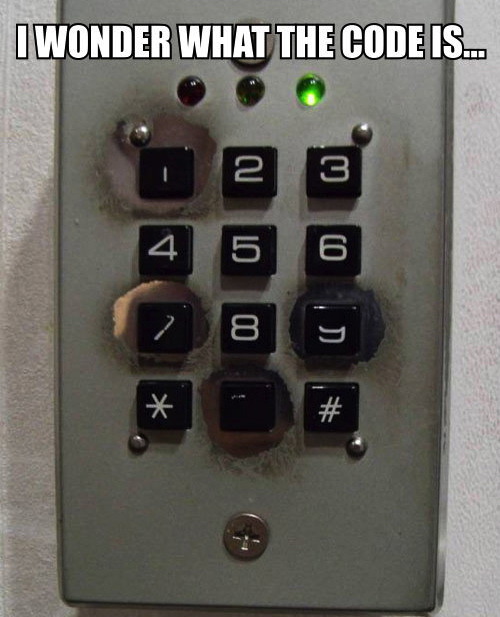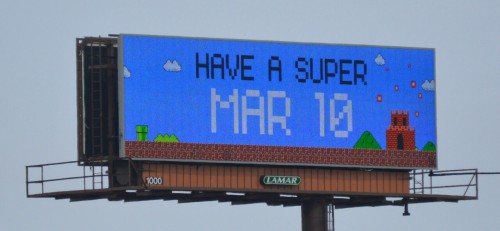Let Me Relax……………will Comment Later…………………..










let me relax……………will comment later…………………..
More Posts from Roboticspidergoblin and Others
why is france called the hexagon when its abundantly clear that it’s a pentagon

I think my local library could be greatly improved by having a forbidden section where they keep tomes of dark magic
I bet I could use this to wish away that pesky genie
I put a cursed ring into the urban fantasy vending machine in an attempt to get rid of it
the vending machine dispenses a dessicated monkey's paw

My favorite war criminal guys <3
Seriously though Fullmetal is such a good show its insane
I just really love Roy (also you can absolutely tell i gave up on the background)

i hauve a cold
I apologise if you've already answered this, but I tried searching your blog and I'm unsure if you haven't or if it's another example of Tumblr's amazing search system.
I was talking with a friend recently about how much of a culture clash the Monk Class is compared to the rest of Dungeons & Dragons and was wondering if there is a coherent reason for their original inclusion. I'm aware that they're largely influenced by Shaolin monks as depicted in Hong Kong cinema in the 70's/80's as compared to the Sword and Sorcery stuff most of the rest of D&D takes influence from.
Basically, my question ultimately boils down to, "Is the Monk Class there purely because of an original player wanting to rule of cool their way into playing something wildly out of genre, or is there a stronger link between Sword and Sorcery and Hong Kong cinema that could have organically resulted in the Monk Class joining the rest of the classes?"
A lot of the link between the two was simply a matter of time and place. The kung fu craze hit North America at just about exactly the same time as the sword and sorcery revival that gave us films like Clash of the Titans and Beastmaster and The Sword and the Sorcerer and Dragonslayer and Krull – not to mention the Arnold Schwarzenegger Conan adaptation, which revived popular interest in first-wave sword and sorcery literature – so there was a lot of it going around. Analysis of early Dungeons & Dragons as a product of its media influences often overlooks that it was largely drawing on what was trendy in American popular media in the 1960s, 1970s and 1980s. Even the tonally incongruous Lord of the Rings references weren't a deep cut; while the books were originally published in the 1950s, they'd experienced a strong resurgence in the 1970s, putting them firmly in the popular consciousness at the time that D&D was being developed. All this being the case, it's not surprising that early D&D was also substantially influenced by Hong Kong action cinema.
That said, the reason the monk character class in particular (i.e., as opposed to kung fu media influences more generally) is there is allegedly because one specific guy in one of the game's early playtest groups really, really wanted to play as Remo Williams from Warren Murphy and Richard Sapir's The Destroyer; several of the class's signature abilities are direct references to powers Williams exhibits in the course of the novels. Remarks from folks who worked at TSR at the time have pointed the finger at Brian Blume as the Remo Williams fan in question, though accounts are conflicted whether Blume was actually an uncredited contributor to Dave Arneson's Blackmoor (1975), in which the class makes its first proper appearance, or whether Blume's interest merely prompted its inclusion.
This is the case for the character archetypes in a lot tabletop RPGs of that era; instead of trying to work out what classes "ought" be be present, authors would simply start with the types of characters their playtesters actually wanted to play, often based on specific popular media characters, then work backwards to derive an IC rationale for why those were the setting's standard adventuring professions. Other examples from D&D in particular most obviously include the Ranger (based on Tolkien's Aragon, naturally), but also the Paladin (principally inspired by Holger Carlsen from Poul Anderson's 1961 isekai novel Three Hearts and Three Lions, also the source of D&D's goofy regenerating trolls), the Assassin, back when it was still a separate character class (probably mainly based on the Assassin Caste from John Norman's Gor), and even the Wizard to a large extent (less Gandalf than you'd think: a large portion of D&D's iconic wizard spell list is lifted directly from the 1963 Vincent Price film The Raven).
(I often think that modern indie RPGs could benefit from reviving this approach. Like, fuck textual consistency – just pick half a dozen of your favourite popular media characters without regard for the compatibility of the source material and work backwards to explain why these six random assholes are your game's playable archetypes!)
This is John Green? I thought I was following a coffee company
Question for the unexisting followers I believe I have,
What is John Green's official tumblr account, if he even has one? Because I've seen some weird schist about him on pinterest and I can't be fully sure about it now.

You can only reblog this today.
-
 pseudacanthicus liked this · 1 week ago
pseudacanthicus liked this · 1 week ago -
 doktordekay liked this · 1 week ago
doktordekay liked this · 1 week ago -
 nemosquirrel reblogged this · 1 week ago
nemosquirrel reblogged this · 1 week ago -
 nemosquirrel liked this · 1 week ago
nemosquirrel liked this · 1 week ago -
 trash-nerd reblogged this · 1 week ago
trash-nerd reblogged this · 1 week ago -
 glassorchid17 reblogged this · 1 week ago
glassorchid17 reblogged this · 1 week ago -
 lyreastronauta reblogged this · 1 week ago
lyreastronauta reblogged this · 1 week ago -
 jayemadeablog reblogged this · 1 week ago
jayemadeablog reblogged this · 1 week ago -
 jayemadeablog liked this · 1 week ago
jayemadeablog liked this · 1 week ago -
 watermelon-converse reblogged this · 1 week ago
watermelon-converse reblogged this · 1 week ago -
 secondhand-sonder reblogged this · 1 week ago
secondhand-sonder reblogged this · 1 week ago -
 imaginingismything liked this · 1 week ago
imaginingismything liked this · 1 week ago -
 cara5421-blog liked this · 1 week ago
cara5421-blog liked this · 1 week ago -
 chaosinsp reblogged this · 1 week ago
chaosinsp reblogged this · 1 week ago -
 amourdeslangues liked this · 1 week ago
amourdeslangues liked this · 1 week ago -
 kantexart reblogged this · 1 week ago
kantexart reblogged this · 1 week ago -
 kantexart liked this · 1 week ago
kantexart liked this · 1 week ago -
 a10milestereo liked this · 1 week ago
a10milestereo liked this · 1 week ago -
 insatiablebloodlove liked this · 1 week ago
insatiablebloodlove liked this · 1 week ago -
 olivebranch311 liked this · 2 weeks ago
olivebranch311 liked this · 2 weeks ago -
 reedthephcknmanual liked this · 2 weeks ago
reedthephcknmanual liked this · 2 weeks ago -
 reedthephcknmanual reblogged this · 2 weeks ago
reedthephcknmanual reblogged this · 2 weeks ago -
 therewillbenoromance reblogged this · 2 weeks ago
therewillbenoromance reblogged this · 2 weeks ago -
 therewillbenoromance liked this · 2 weeks ago
therewillbenoromance liked this · 2 weeks ago -
 grycza liked this · 2 weeks ago
grycza liked this · 2 weeks ago -
 absolutemadnessforfree reblogged this · 2 weeks ago
absolutemadnessforfree reblogged this · 2 weeks ago -
 dontfollowmeman reblogged this · 2 weeks ago
dontfollowmeman reblogged this · 2 weeks ago -
 afluffymugcake liked this · 2 weeks ago
afluffymugcake liked this · 2 weeks ago -
 gabrieluttersonstwinkbitch liked this · 2 weeks ago
gabrieluttersonstwinkbitch liked this · 2 weeks ago -
 shamelessgalaxymentality reblogged this · 2 weeks ago
shamelessgalaxymentality reblogged this · 2 weeks ago -
 slowpokecurry liked this · 2 weeks ago
slowpokecurry liked this · 2 weeks ago -
 cater-the-diamond reblogged this · 2 weeks ago
cater-the-diamond reblogged this · 2 weeks ago -
 cater-the-diamond reblogged this · 2 weeks ago
cater-the-diamond reblogged this · 2 weeks ago -
 cater-the-diamond reblogged this · 2 weeks ago
cater-the-diamond reblogged this · 2 weeks ago -
 cater-the-diamond reblogged this · 2 weeks ago
cater-the-diamond reblogged this · 2 weeks ago -
 cater-the-diamond reblogged this · 2 weeks ago
cater-the-diamond reblogged this · 2 weeks ago -
 cater-the-diamond liked this · 2 weeks ago
cater-the-diamond liked this · 2 weeks ago -
 cre4ture reblogged this · 2 weeks ago
cre4ture reblogged this · 2 weeks ago -
 ovt0fideas liked this · 2 weeks ago
ovt0fideas liked this · 2 weeks ago -
 adhdream1409 reblogged this · 2 weeks ago
adhdream1409 reblogged this · 2 weeks ago -
 adhdream1409 liked this · 2 weeks ago
adhdream1409 liked this · 2 weeks ago -
 auroraborealis1890 liked this · 2 weeks ago
auroraborealis1890 liked this · 2 weeks ago -
 skybluesocks reblogged this · 2 weeks ago
skybluesocks reblogged this · 2 weeks ago -
 skybluesocks liked this · 2 weeks ago
skybluesocks liked this · 2 weeks ago -
 rainybasil2214 liked this · 2 weeks ago
rainybasil2214 liked this · 2 weeks ago -
 brokenstar-s reblogged this · 2 weeks ago
brokenstar-s reblogged this · 2 weeks ago -
 brokenstar-s liked this · 2 weeks ago
brokenstar-s liked this · 2 weeks ago -
 assorted-fandom-shitposts liked this · 2 weeks ago
assorted-fandom-shitposts liked this · 2 weeks ago -
 the-fandom-hopping-mage liked this · 2 weeks ago
the-fandom-hopping-mage liked this · 2 weeks ago -
 the-fandom-hopping-mage reblogged this · 2 weeks ago
the-fandom-hopping-mage reblogged this · 2 weeks ago
